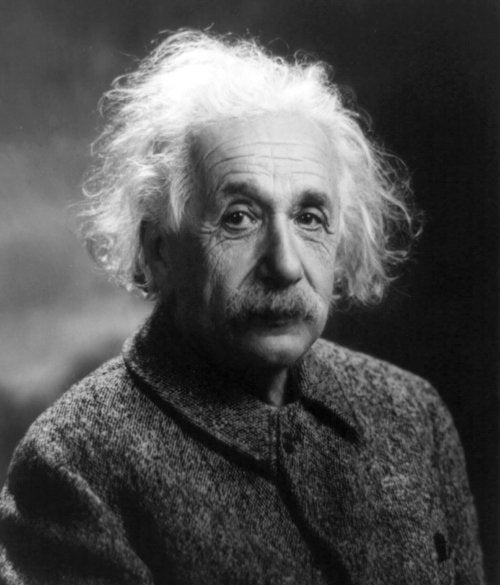Today marks the centennial of Einstein’s famous equation, E=mc2. The concept, if not the exact form of the equation as we know it today, first appeared in the German scientific journal Annals of Physics. The paper’s title was a question: Does the inertia of a body depend on its energy content?
“If a body gives off the energy L in the form of radiation, then its mass diminishes by L/V2,” he wrote. Einstein originally used L to represent energy instead of E, and he used V for the speed of light, rather than the now-standard c. This sentence boils down to m=E/c2 — as close as Einstein got in his original paper to the rearranged form we’re most familiar with.
The International Union of Pure and Applied Physics declared 2005 the World Year of Physics, kickstarting a global celebration of physics and its importance on the 100th anniversary of Einstein’s “miracle year.” The American Physical Society, the American Association of Physics Teachers, and the American Institute of Physics are leading efforts in the United States.
Einstein@Home, the astronomical screensaver that uses your computer in the search for gravitational radiation, is one way to join in. Einstein predicted the radiation’s presence, and now astronomers believe they have the tools to detect it from nearby neutron stars. But they need your help. Einstein@Home’s software uses some of your computer’s time to search for gravitational signals from state-of-the-art observatories in Hanford, Washington; Livingston, Louisiana; and Hanover, Germany. (Once you have it installed, you can even join Team Astronomy.) For more details, see Trudy Bell’s overview at the IEEE web site.
- “The Legacy of Einstein” conference at Gustavus Adolphus College, Saint Peter, Minnesota, September 27 and 28, includes presentations from Caltech’s black-hole expert Kip Thorne and National Public Radio’s science correspondent Ira Flatow.
- The Sunnyvale Public Library in Sunnyvale, California, will host “Einstein for Everyone: How Astronomers Are Proving Einstein’s Most Bizarre Ideas” September 28. Andrew Fraknoi, Chair of the Foothill College Astronomy Department, will explain the science in everyday language.
- Nobel laureate Sheldon Glashow discusses “The Particle and the Universe” at the University of Maryland, College Park, September 28.
- John Rigden, author of Einstein 1905: The Standard of Greatness celebrates Einstein’s centennial at the University of Memphis September 28.
- See a one-hour presentation of some of the most exciting physics demonstrations at the “Wonders of Physics Traveling Show” September 28th at the University of Wisconsin, Madison. The show is intended for students of all ages.
There are many more events throughout the rest of the year. Check out the World Year of Physics event listing for happenings near you.










